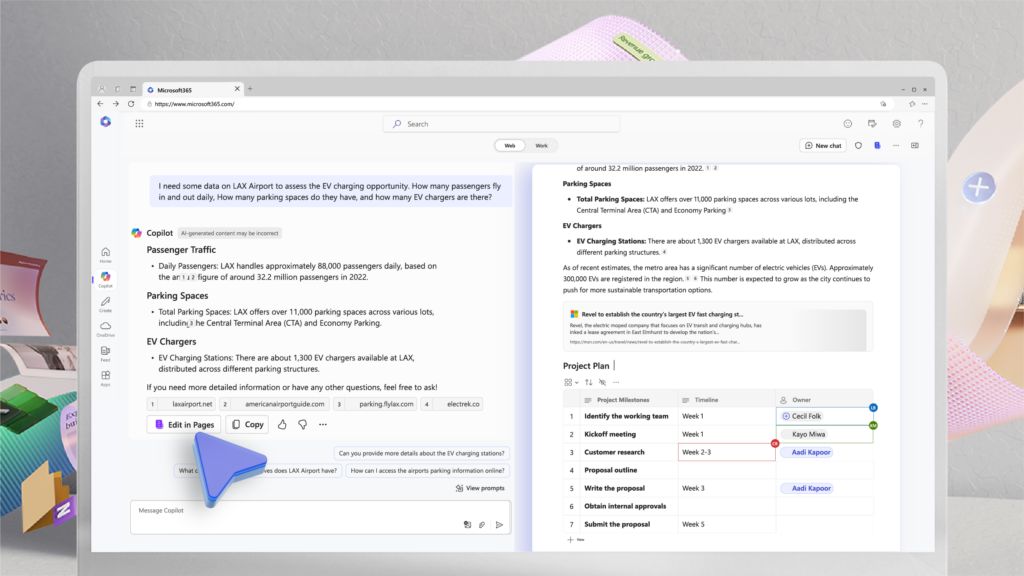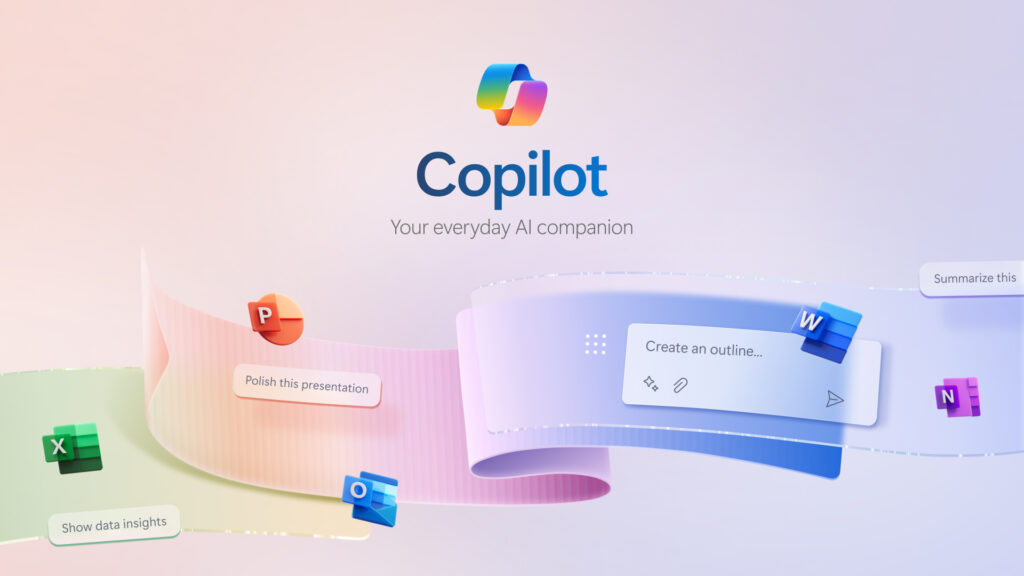
Office 2024 for consumers available October 1
Microsoft 365 is the best way to access the latest versions of the productivity apps that millions of people use every day to bring their ideas to life and power through tasks.
Transform data into insightful spreadsheets to help you analyze trends and visualize information.

Microsoft 365 is the best way to access the latest versions of the productivity apps that millions of people use every day to bring their ideas to life and power through tasks.

We are introducing Wave 2 of Microsoft 365 Copilot innovation, with three key updates. From enterprises to small businesses, they help Copilot get better every day.

Small and medium-sized businesses (SMBs) have tremendous vision and passion, and Copilot for Microsoft 365 can help turn dreams into reality.

Continuing our vision for Microsoft Copilot to bring the power of generative AI to everyone across work and life, we’re expanding availability and purchase options for individuals and organizations and bringing new value to Copilot Pro subscribers.

We’re announcing the public preview of Microsoft Copilot for Finance, a game-changer for finance professionals and the newest role-based extension of Microsoft Copilot. Microsoft Copilot for Finance is a momentous leap forward, specifically crafted to revolutionize the daily grind of well-known financial processes.

We are updating our Microsoft Copilot product line-up with a new Copilot Pro subscription for individuals; expanding Copilot for Microsoft 365 availability to small and medium-sized businesses; and announcing no seat minimum for commercial plans.

Today at an event in New York, we announced our vision for Microsoft Copilot—a digital companion for your whole life—that will create a single Copilot user experience across Bing, Edge, Microsoft 365, and Windows.

Discover the latest in Microsoft 365, including Copilot in Microsoft Viva, Microsoft Viva Glint, Windows 365 Frontline, and Microsoft Intune Suite.

Today, we announced Copilot for Microsoft 365—your copilot for work. Copilot combines the power of large language models with your data in the Microsoft 365 apps and Microsoft Graph to turn your words into the most powerful productivity tool on the planet.

Today, we’re excited to share details about how Microsoft 365 is getting better with lower-cost membership options and simpler experiences that make it easier than ever to achieve your goals.

Get one integrated solution that brings together the business apps and tools you need to launch and grow your business when you purchase a new subscription of Microsoft 365 Business Standard or Business Premium on microsoft.com.

Now that hybrid work is just work, the challenge for organizations is to balance employee demands for flexibility with business needs.